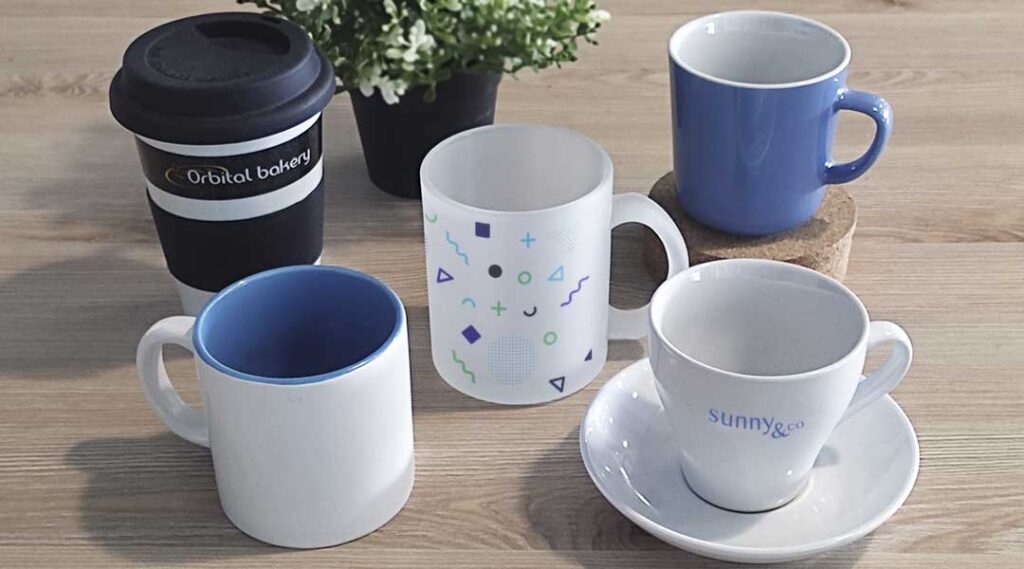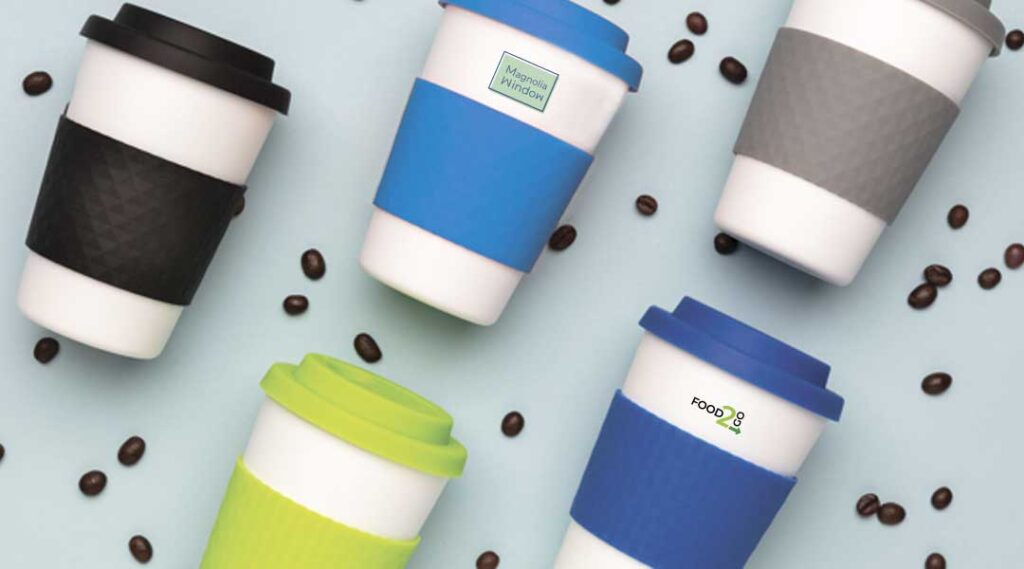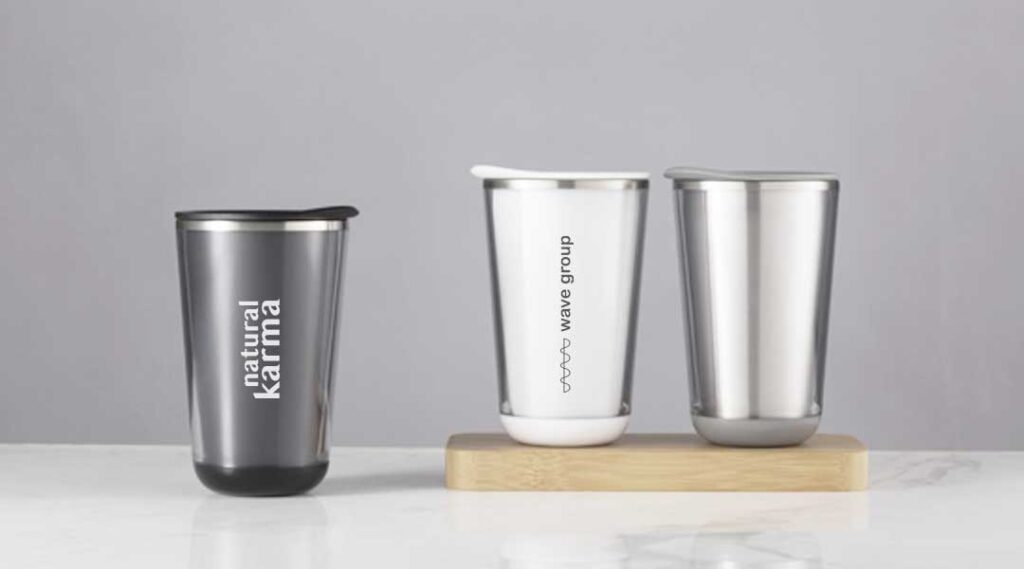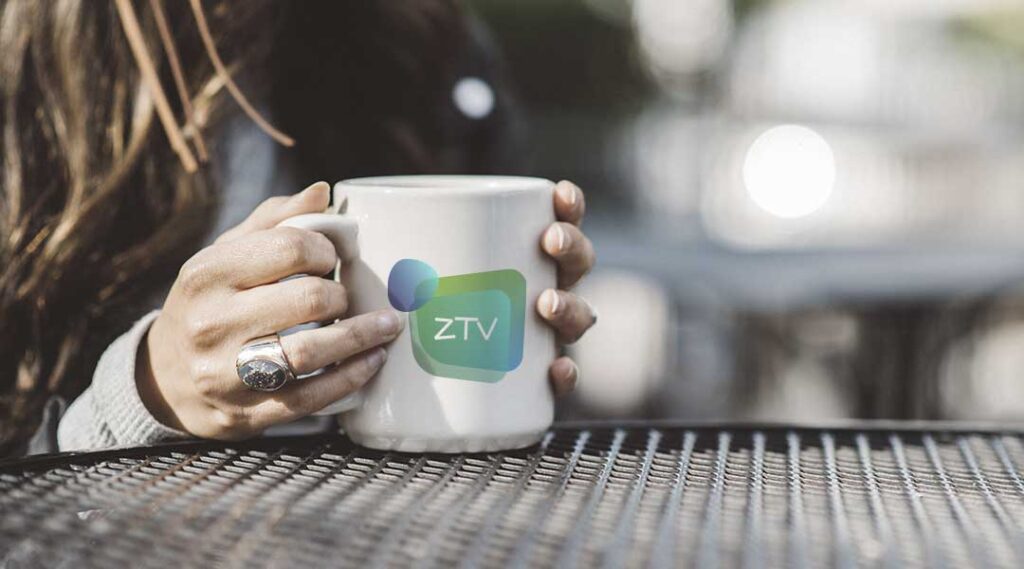
Branded mugs are one of the most popular gifts, not only in the marketing world but also at a personal level. Many shops sell their own designs with funny phrases, quirky illustrations or city landmarks. They’re inexpensive to produce but have a big impact, as mugs are used daily at breakfast time. That means they won’t be left forgotten in a drawer, and with the right design, they’ll even bring a smile to the recipient’s face.
Branded mugs with your company logo are versatile gifts that work well for many occasions. Choosing one is always a safe option. However, since there are several types available, it’s important to pick the right style for your clients or employees. In this guide, we’ll explain how to choose the best promotional mugs, considering material, size and format.
Types of Mugs by Format
Mugs
Although we often use the word mug as a synonym for cup, there are some differences. Mugs are large, cylindrical cups without saucers, usually made of ceramic or porcelain and with a larger capacity. Originating in England, mugs quickly became a popular souvenir and advertising item, often featuring logos, characters or famous quotes. Today, they’re widely used for breakfast and in offices, which is why many businesses opt to personalise mugs with their own logo and give them to employees.

Breakfast cups: for tea, coffee and cappuccino
These are a must in any café, hotel or restaurant. Breakfast cups are slightly smaller than mugs, as they don’t require such a large capacity.
- • Espresso cups: The smallest of all. In Italy, an espresso is served in a 50 ml cup, but internationally you’ll also find 80–100 ml versions – great for businesses with international staff or tourist-heavy cafés.
- • Tea cups: Wider in shape, often with a handle and saucer, perfect for a mid-morning tea.
- • Classic breakfast cups: Larger than tea cups, ideal for lattes, cappuccinos or a bowl of cold milk with cereal.
Reusable travel mugs
These mugs are handle-free and usually come with a silicone grip band and lid. They’re designed for carrying coffee, hot chocolate or tea on the go, whether to work, university or elsewhere. In recent years, cafés have increasingly offered reusable branded takeaway cups to loyal customers who order their drinks to go.

Thermal mugs
Similar in appearance to takeaway cups, but with one key difference: thermal mugs are double-walled to keep drinks hot or cold for several hours. They’re especially useful for commuting, road trips, picnics or long days at the office.

Carabiner mugs
These mugs feature a carabiner handle, making them perfect for outdoor enthusiasts. They can be clipped to a backpack or hiking gear, making them a favourite among campers, trekkers and adventure travellers. Outdoor and sustainable fashion brands often choose these sturdy yet lightweight metal mugs to convey values of freedom, exploration and connection with nature.
Materials Used in Promotional Mugs
- • Ceramic: The most common material, offering durability, lightness and many printing options (pad printing, transfer, sublimation, and laser engraving). Affordable and reliable, it’s the go-to choice for promotional gifts.
- • Porcelain: Similar to ceramic but more fragile, with a finer, glossy finish. Traditionally used for teacups and espresso cups but now also available for takeaway mugs. Seen as more premium.
- • Stainless steel: Highly resistant and impact-proof, perfect for outdoor mugs. Many models feature folding handles or lids with thermal insulation. Laser engraving works best on this material.
- • Plastic: Lightweight, break-resistant and low-cost. A good choice for children, as they’re less likely to break if dropped.
- • Glass/Crystal: Popular for espresso glasses and increasingly common for mugs and latte cups. Glass offers an attractive finish and preserves the original flavour of the drink. Customisation usually involves sublimation, sandblasting or laser engraving.
- • PLA (corn starch bioplastic): A biodegradable, eco-friendly option that aligns with green marketing strategies. Commonly used for takeaway mugs.
- • Cork: Often combined with glass or ceramic (e.g., bases) for better grip, or with plastic to create bioplastics. Cork mugs are popular eco-friendly gifts.

The Most Common Mug Sizes
Promotional mugs generally fall into three capacity ranges:
- • Small (80–250 ml): Includes espresso cups, tea cups, breakfast cups and some small travel mugs.
- • Medium (250–350 ml): Suitable for a latte or a hot chocolate, available in both classic and travel styles.
- • Large (350 ml and above): The typical mug size, perfect for a hearty breakfast or cereal with milk. Also offers more print area to make your logo stand out.
Final Thoughts
That wraps up our guide to promotional mugs. We hope it helps you make the right choice when selecting mugs for your office or as gifts for your clients. If you’d like to explore customisation techniques to ensure your logo, text or design looks its best, our customer service team will be happy to advise you.
Now it’s over to you! What’s your favourite style – mug or cup? Do you prefer a short espresso or an American-style coffee? Share your thoughts with us in the comments.